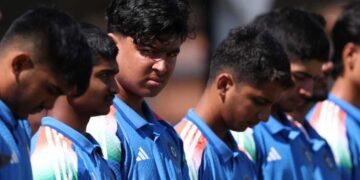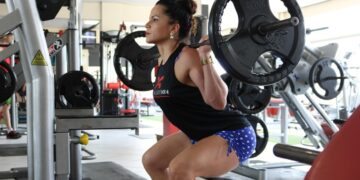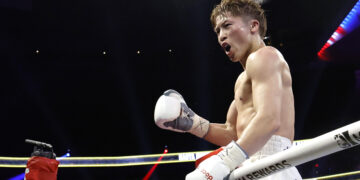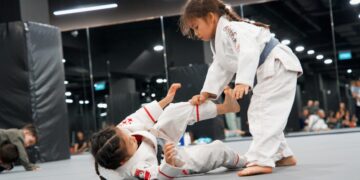In the heart of Singapore, where modernity meets tradition, martial arts stand as a testament to a timeless pursuit of excellence. Beyond the bustling streets and towering skyscrapers, learning martial arts offers more than a means of self-defense; it represents a journey of perpetual self-betterment. Martial arts, with its roots deeply entrenched in Asian heritage, is not just a physical endeavor but a philosophical quest for continuous personal growth. This narrative dives seamlessly into the essence of the book “Atomic Habits” by James Clear. Through the lens of martial arts, we explore the connection between wisdom and the modern science of habit formation, illustrating the power of small, daily improvements in forging a path to greatness.
The Mind’s Pathways
Ever wondered why sipping your morning coffee feels so automatic, or why evening jogs have become second nature to you? The answer lies in the intricate tapestry of our brains and the psychological patterns known as habits. These routines, both small and significant, shape our daily lives, driving our actions often without us even realizing it. So, how do these habits form, and what’s the science behind their stronghold on our behaviors?
The Building Blocks Of Habits
At the core of habit formation is a simple, yet powerful, three-part loop: the cue, the routine, and the reward. This cycle begins with a cue or trigger that tells your brain to go into automatic mode, leading to the routine (the behavior itself) and culminating in a reward, which helps your brain decide if this particular loop is worth remembering for the future. Over time, this cycle becomes more and more automatic, forming a habit.
Imagine you’re trying to make a habit of reading before bed. The cue might be the act of getting into bed, the routine is picking up a book and reading, and the reward could be the relaxation and pleasure you derive from the story. If this cycle is repeated consistently, your brain starts associating bedtime with reading, making it an automatic nightly ritual.
1) The Foundation Of Small Habits
James Clear posits that tiny, almost imperceptible changes in our daily habits can lead to remarkable results. Martial arts epitomize this principle through their foundational training methods. In each session, practitioners focus on refining their techniques, be it a punch, kick, or stance, aiming for just a 1% improvement from their previous performance. The famous Bruce Lee once said, “I fear not the man who has practiced 10,000 kicks once, but I fear the man who has practiced one kick 10,000 times.” This quote emphasizes the importance of consistency and focus. Over time, these small enhancements accumulate, transforming the novice into a master.
In Singapore, where the pace of life is swift and the pressure to excel is high, martial arts offer a sanctuary where progress is measured against oneself, not against the relentless march of external expectations.
2) Cultivating Discipline And Consistency

The discipline and consistency cultivated in martial arts classes will extend beyond the mats, impacting various aspects of your life.
Success in martial arts is not achieved through sporadic bursts of effort but through the consistent, disciplined practice of fundamental movements and forms. This mirrors Clear’s advocacy for establishing routines that nudge us towards our goals, one day at a time. In the context of Singapore’s disciplined society, martial arts reinforce the value of regular, incremental progress. Students learn that consistency is key to mastery, and they get to experience it while practicing in the gym. A Muay Thai instructor will constantly get students to perform movements that may seem repetitive, like throwing a knee on a heavy bag or continuous roundhouse kicks. This, in turn, allows martial arts students to develop the proper form into something habitual, which leads to improvement in their techniques. Nonetheless, cultivating discipline and consistency is not only for the gym, it is a lesson that extends far beyond the gym and into personal and professional realms.
3) The Power Of Environmental Design
James Clear highlights the importance of crafting an environment that facilitates good habits and deters bad ones. Martial art gyms in Singapore are designed to immerse the practitioner fully in their training, minimizing distractions and fostering a focused, dedicated mindset. The layout of the gym, the placement of equipment, and even the ritual bow before sparring, all serve to cue the practitioner into a state of mindfulness and respect for the art.
Facilitating good habits also involves the care for the practitioner’s training gear. Constant training can be tiring, and personal equipment may suffer from wear and tear over time. Getting into the habit of cleaning and maintaining their equipment such as boxing gloves, hand wraps, headgear, and so on enables the practitioner to get into a habit of self-discipline. This principle teaches us that by thoughtfully designing our surroundings, we can make it easier to pursue our 1% improvements daily.
4) Embracing Failure As A Path To Growth
One of the most compelling lessons from “Atomic Habits” is the notion that failure is not the opposite of success, but a part of the process. Martial arts embody this through the concept of “failing forward.” Take for example Demetrious “Mighty Mouse” Johnson, celebrated as one of the premier fighters in mixed martial arts, who exemplifies this principle. His journey is marked not just by victories but by setbacks as well, which have been crucial in honing his skills. His initial defeat in a championship match against Adriano Moraes served as a pivotal learning moment. Absorbing the lessons from this loss, Johnson made a triumphant return in a rematch, securing the ONE Flyweight MMA World Championship. This victory was not the culmination of his growth; he continued to refine his abilities, successfully defending his title thereafter, showcasing that setbacks can indeed propel one toward greater achievements.
Each mistake made in practice is viewed as a valuable learning opportunity, a step towards eventual mastery. In Singapore, where the fear of failure can sometimes stifle innovation and personal growth, martial arts offer a refreshing perspective. Practitioners learn to view each setback as a chance to refine their technique, adjust their strategy, and improve incrementally.
5) The Community As A Catalyst For Improvement

The bonds formed within the martial arts gym last, fostering lifelong friendships that offer ongoing support and enrichment.
Finally, the role of the community in fostering continuous improvement cannot be overstated. Martial arts schools in Singapore, much like in other parts of Asia, function not just as places of learning but as communities of support and encouragement. Fellow practitioners and instructors offer guidance, feedback, and motivation, all of which are crucial for sustaining the journey towards daily 1% improvements.
Instructors in these settings act as more than teachers; they are mentors who foster growth by challenging students and providing personalized guidance. They encourage resilience and adaptability by setting goals that push students to their limits in a supportive environment.
Training partners also play a crucial role, offering immediate feedback and encouragement. This interaction not only helps in refining techniques but also in building confidence and a sense of accountability. The mutual support extends beyond practice sessions, creating a network of advice, shared experiences, and encouragement.
This collective pursuit of excellence mirrors Clear’s assertion that our habits are often shaped by the company we keep, and the camaraderie that develops within these communities goes beyond the mats. Members often share experiences, strategies, and advice, creating a rich tapestry of knowledge that benefits all, and highlighting the importance of surrounding ourselves with individuals who inspire and challenge us to grow.
The Journey Of Self-Improvement

Martial arts instill self-discipline through effective methods for cultivating positive habits, facilitating ongoing self-improvement with each passing day.
The journey of martial arts, with its emphasis on continuous, incremental improvement, offers a powerful blueprint for personal development. Through the disciplined refinement of technique, the mindful design of our environments, the embrace of failure as a stepping stone, and the support of a like-minded community, we can apply these principles to all areas of our lives. Whether in the bustling streets of Singapore or anywhere else in the world, the path of martial arts illuminates the way towards achieving our fullest potential, one day, and one percent, at a time.
Understanding the psychology behind habit formation empowers us to take control of our actions and, by extension, our lives. Whether it’s adopting healthier routines, learning new skills, or breaking patterns that no longer serve us, the key lies in harnessing the power of habits. As we navigate this journey, let’s remember to celebrate the small victories, for it’s in these moments that the seeds of lasting change are sown.
So, the next time you find yourself automatically reaching for that book before bed or lacing up your running shoes in the morning, take a moment to appreciate the complex psychological forces at play. After all, it’s these everyday habits that, piece by piece, shape the mosaic of our lives.
Kickstart A New Habit With Martial Arts!
Thinking of starting a habit that involves martial arts? Come to Evolve MMA and try out our trial classes! Led by World Champions of Muay Thai, Brazilian Jiu-Jitsu, Boxing, and more, you are bound to be surrounded by people who are navigating this journey, so no need to do it alone!
Book your complimentary trial class with our World Champions below!
If you have any other questions regarding Evolve MMA and the programs we offer, you can get in touch with our membership executives at the following locations:
Evolve MMA (Far East Square)
26 China Street
Far East Square #01-01
Singapore 049568
Phone: Evolve MMA (Orchard Central)
181 Orchard Road
#06-01 Orchard Central
Singapore 238896
Phone: Evolve MMA (KINEX)
11 Tanjong Katong Road
#02-52 KINEX
Singapore 437157
Phone: Evolve MMA (Clarke Quay Central)
6 Eu Tong Sen Street
#04-18 Clarke Quay Central
Singapore 059817
Phone: Evolve MMA (Star Vista)
1 Vista Exchange Green
#02-26A The Star Vista
Singapore 138617
Phone: (65) 6539 9590
Life goals that add meaning to our lives are rarely handed to us on a silver platter. This holds for fitness goals and the pursuit of a healthy lifestyle such as attending martial arts classes….
Parents are always on the hunt for the best sports, activities, and education for their children. Martial arts play a unique role in this space, being that it is not just another sport or activity….
Our children are always in need of proper guidance. One great lesson they need to learn, and one that will ultimately benefit them later on in life, is proper goal setting. Knowing how to set…
As an MMA fighter, you’re always looking for techniques that give you an edge inside the cage. Judo, with its focus on throws, holds, and submissions offers a wealth of techniques that can be highly…
Have you ever wondered why many top CEOs and celebrities are drawn to martial arts? What could these high-profile individuals, with their packed schedules and myriad of responsibilities find in the disciplined and demanding world…
There’s something about the start of a New Year that makes us want to find ways to improve ourselves. Making a New Year’s resolution to make martial arts training part of your lifestyle is one…
In the Muay Thai scene, Buakaw Banchamek, whose birth name is Sombat Banchamek, is a legendary Nak Muay with two hundred and eighty fights to his name. Some of his accolades include being a two-time…
Leg locks have been dominating the grappling scene for the past few years. To become competitive in modern BJJ, grapplers need to familiarize themselves with the different leg lock positions to build their offensive and…
Muay Thai has gone through a myriad of changes over the past decade. Between the growing popularity of three-round fights and the implementation of the Globalised Ruleset, there is no way that fighters of the…
Working from the guard position is one of the most fundamental skills you must master in Brazilian Jiu-Jitsu. BJJ is a martial art that heavily emphasizes utilizing the guard for offensive and defensive purposes. The…
Fighters often find themselves in the overtie position in mixed martial arts and grappling-based fighting styles like Brazilian Jiu-Jitsu and Wrestling. Two combatants are in the overtie position when both fighters have one hand on…
So you’ve finally followed through and signed up for a BJJ class in Singapore. The next step is to attend your first training session. It’s normal to feel a bit anxious about your first day…



































